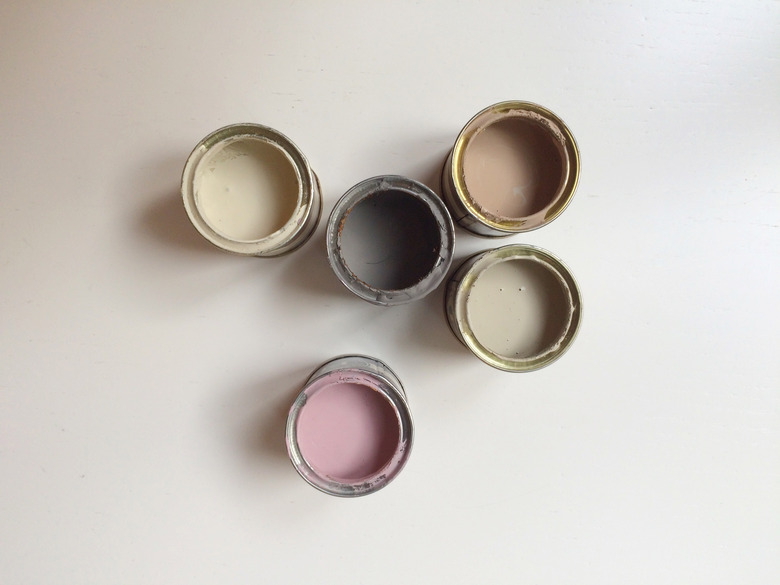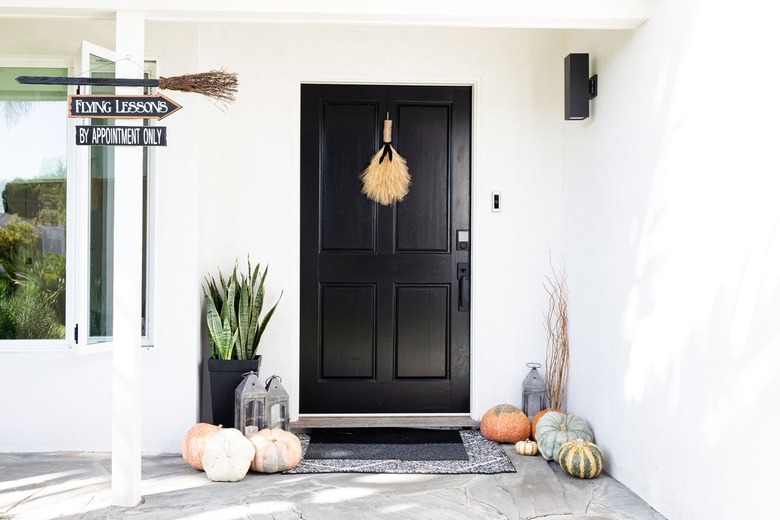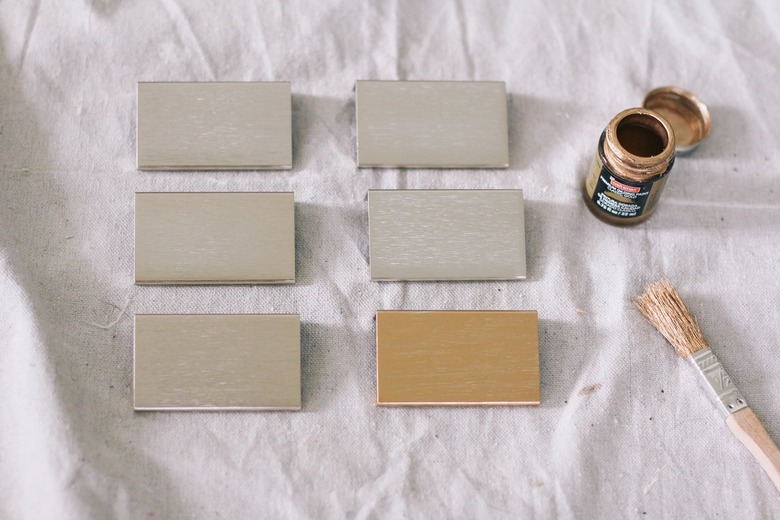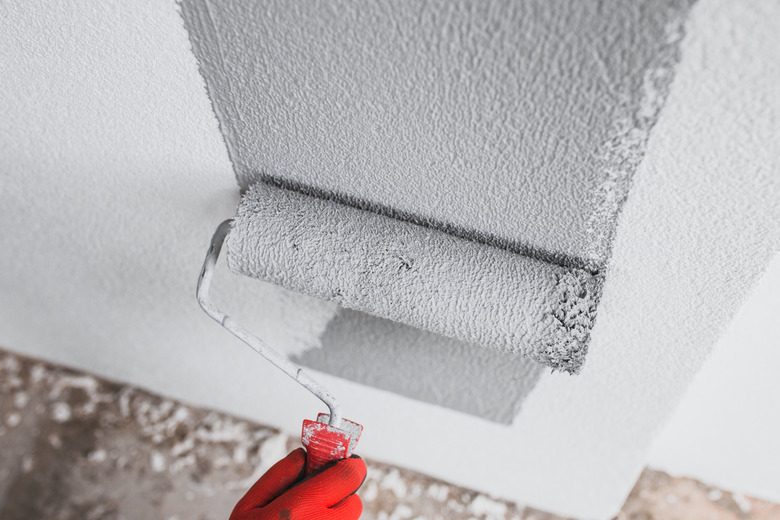The 5 Types Of Paint Finishes Every DIYer Needs To Know
We may receive a commission on purchases made from links.
When painters talk about the differences in paint finishes, they aren't talking about the pigments or binders or whether paints are soluble in water or a solvent. Paint finishes refer to the amount of light the pain reflects after it dries. In other words, they are talking about paint sheen. It's a characteristic often overlooked by DIY painters, and it makes a huge difference to the quality of a paint job.
What Creates Paint Sheen?
What Creates Paint Sheen?
Paint sheen is largely determined by the ratio of pigments to binders in the paint, which paint manufacturers refer to as pigment volume concentration (PVC), but it can also be modified by additives. For example, calcium carbonate refracts incident light and is often added to give paint a matte finish. On the whole, however, the higher the PVC — which indicates a higher ratio of pigments — the less glossy the finish will be. This makes a difference not only to the appearance of the painted surface but also to the durability of the paint and its washability.
When you're shopping, you'll find five basic types of paint finishes: matte (flat), eggshell, satin, semigloss, and gloss. There are other options, such as matte enamel, ultra-matte, and pearl, but they aren't as common. In fact, there are more possibilities than you'll ever find at the store since the basic determinant of sheen is the PVC, which can differ incrementally. For the most part, however, you'll be choosing from the five main finishes, and there is a best application for each of them.
Key Differences in Paint Finishes
Key Differences in Paint Finishes
When choosing a paint finish, one of the prime concerns is how it will look when it dries. Because it doesn't reflect much light, flat or matte paint tones everything down, and it has the added advantage of hiding imperfections in the wall, such as bumps, nicks, and bubbles from loose drywall tape. It works well on a textured wall because it tends to hide dust and dirt that collect in the small crevices of the texture, which is good because it isn't very washable. High-gloss paint does the opposite; it makes imperfections more obvious and dirt more visible, so it needs more frequent cleaning. Any paint finish between these extremes combines the qualities of reflectivity and washability to the degree that its PVC is closer to matte or full gloss.
Another thing to consider is application. Flat finishes cover better and are less likely to require multiple coats than higher-gloss paint. However, they tend to dry more quickly, so brush strokes have less time to level out and are more likely to be a problem. That isn't an issue when you're rolling a wall, but it's a good reason to avoid a matte finish when brush-painting woodwork.
Durability is a third consideration. Since a flat or matte finish contains few of the binders that make a finish hard and impact-resistant, it isn't the best choice for high-traffic areas where it's likely to be marred by scuffs and scrapes. It also offers little to no resistance to moisture buildup caused by condensation, and it isn't a good choice for high-humidity areas, like bathrooms and laundry rooms. In these areas, a higher-gloss paint is a better choice, and most people choose semigloss to avoid the visual impact of a high-gloss paint. A matte finish does have the advantage of being easier to touch up, but few homeowners want to pull out a can of paint every time the wall gets scuffed.
|
Paint Finish |
Appearance When Dry |
Application |
Durability |
|
Matte (flat) |
Low light reflectivity, hides imperfections |
Good coverage with one coat, dries quickly |
Low durability, little to no moisture resistance |
|
Eggshell |
Low light reflectivity |
Good coverage with one coat |
Low durability, little moisture resistance |
|
Satin |
Medium light reflectivity |
Needs 1-2 coats |
Somewhat durable and moisture resistant |
|
Semi-Gloss |
High light reflectivity |
Needs multiple coats |
Fairly durable and moisture resistant |
|
Gloss |
Shiny, highlights imperfections |
Needs multiple coats |
Durable and moisture resistant |
Comparing the Five Basic Paint Finishes
Comparing the Five Basic Paint Finishes
The differences in paint finishes represent a spectrum. At one end are high pigmentation and excellent coverage combined with low reflectivity and poor durability, and at the other are low pigmentation and so-so coverage combined with high reflectivity and good durability.
The sheen spectrum is just as important as the color spectrum when choosing a product for your painting project, and it can be difficult to decide. Keep in mind when painting indoors that the more gloss a finish has, the easier it is to clean. The same isn't necessarily true for exterior paints because those without much sheen usually have a pigment to binder ratio that isn't much different from high-sheen products. They just include additives to disperse the light.
1. Matte (Flat)
Flat paint contains the lowest amount of binders and the highest amount of pigmentation of any paint, and it has a slightly chalky feel when dry. Its lack of reflectivity can have a calming influence inside the house, and outdoors, it helps to mute the effect of sunlight on walls and other surfaces. As an interior paint, it's best for low-traffic areas. Exterior flat or matte paints need a certain quantity of binders to make them durable enough to withstand the elements, so they usually have additives to disperse light and reduce reflectivity.
2. Eggshell
An eggshell finish has slightly more luster than a flat one but not enough to make blemishes more obvious. This is the finish usually recommended for textured interior walls because it's slightly more durable than matte and doesn't mute incident light to the same degree. Think of the reflectivity of an actual eggshell and you'll have a good idea of how an eggshell finish appears once it has dried. The extra binders add body and solidity.
3. Satin
A satin finish has a slightly higher concentration of binders — and hence more reflectivity — than an eggshell finish, and that gives a more velvety appearance, which is why the finish is called satin. It can be used as a wall paint, but it's more often used for window and door trim as well as other interior woodwork. Satin is a good choice for powder rooms and half baths that aren't subject to splashing water and high humidity. It's also a popular choice for exterior trim and siding because it has just enough reflectivity to make the painted surface stand out against the surrounding landscape.
4. Semigloss
Semigloss paint crosses the boundary to a high-reflectivity, low-PVC finish. It has more binders than pigment, which makes it easy to wash, and it doesn't highlight wall blemishes as readily as a full-gloss paint. It's easy to clean, resists moisture, and is the most commonly used paint for walls in high-humidity areas, like kitchens, laundry rooms, and bathrooms with showers or tubs. It's also a popular choice for interior and exterior trim because it makes the trim stand out against walls covered with a lower-sheen paint, such as eggshell or satin. Semigloss isn't recommended when you want to hide wall imperfections because it will make them stand out.
5. Gloss
High-gloss paint is the most durable and easy to clean. It isn't the best paint for surfaces with imperfections because of its reflectivity, so it's probably the finish that gets used the least for indoor painting. It can look great on an ultra-smooth interior wall, but if that wall has any nicks or blemishes, they will be immediately visible. A gloss finish is most often used outdoors where the high reflectivity provides a dramatic highlight for trim and small outbuildings. It's also the best finish for painted furniture.



